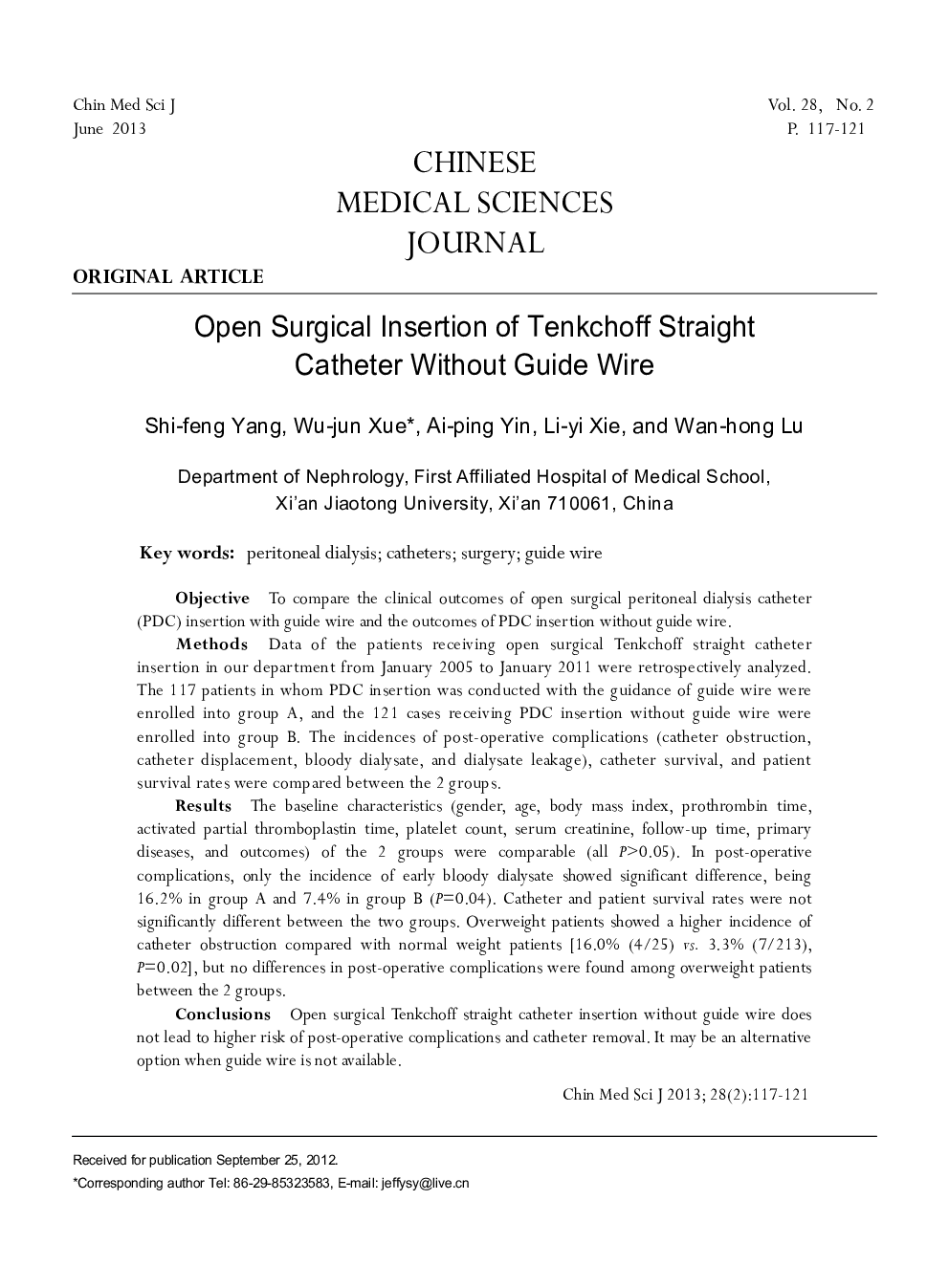| Article ID | Journal | Published Year | Pages | File Type |
|---|---|---|---|---|
| 3459549 | Chinese Medical Sciences Journal | 2013 | 5 Pages |
ObjectiveTo compare the clinical outcomes of open surgical peritoneal dialysis catheter (PDC) insertion with guide wire and the outcomes of PDC insertion without guide wire.MethodsData of the patients receiving open surgical Tenkchoff straight catheter insertion in our department from January 2005 to January 2011 were retrospectively analyzed. The 117 patients in whom PDC insertion was conducted with the guidance of guide wire were enrolled into group A, and the 121 cases receiving PDC insertion without guide wire were enrolled into group B. The incidences of post-operative complications (catheter obstruction, catheter displacement, bloody dialysate, and dialysate leakage), catheter survival, and patient survival rates were compared between the 2 groups.ResultsThe baseline characteristics (gender, age, body mass index, prothrombin time, activated partial thromboplastin time, platelet count, serum creatinine, follow-up time, primary diseases, and outcomes) of the 2 groups were comparable (all P>0.05). In post-operative complications, only the incidence of early bloody dialysate showed significant difference, being 16.2% in group A and 7.4% in group B (P=0.04). Catheter and patient survival rates were not significantly different between the two groups. Overweight patients showed a higher incidence of catheter obstruction compared with normal weight patients [16.0% (4/25) vs. 3.3% (7/213), P=0.02], but no differences in post-operative complications were found among overweight patients between the 2 groups.ConclusionsOpen surgical Tenkchoff straight catheter insertion without guide wire does not lead to higher risk of post-operative complications and catheter removal. It may be an alternative option when guide wire is not available.
